As mentioned in my article last week, Range Deviation Pivots provide the core to other studies and patterns and is covered extensively in my first book New Methods in Technical Analysis. Two of these are called Powwerplay and Slammdunk, the former being a positive indicator and the latter negative. Both play a role in the Signals indicator as well as either an entry or exit, depending on the existing position.
We'll start with Powwerplay, which is triggered when the expansion of Range for the day goes beyond the 99.8 percentile of the Range Deviation average. Remember that the Range Deviation Pivots are not symmetrical; this means that the barriers differ depending whether expansion occurs with the trend (higher barrier) or against the trend (lower barrier).
Signals are rare as the qualification threshold is very high, which returns us to the premise that less is more when building technical code for individual stocks. It is often the case that this expansion is the result of a news story or quarterly results, which also enables you to connect the story or fundamentals with the chart.
The first example is on the Health Care Company Humana (HUM). Powwerplay signals are marked by green squares below the bar in question and the chart shows two different examples of a signal. The first is with the trend and there is no resistance above from Peak Expansion or Peak Energy. Returning to what happened on that day, the rise was caused by President Trump announcing that he wanted new price disclosures for hospitals and insurers.
The second signal was against the trend and within the Peak-based support zone. This was the day before Humana announced the successful placing of a $1 Billion debt offering.
Therefore, whenever a Powwerplay appears with no news story, it alerts me to the fact that the possibility has arisen that a news story will be forthcoming.
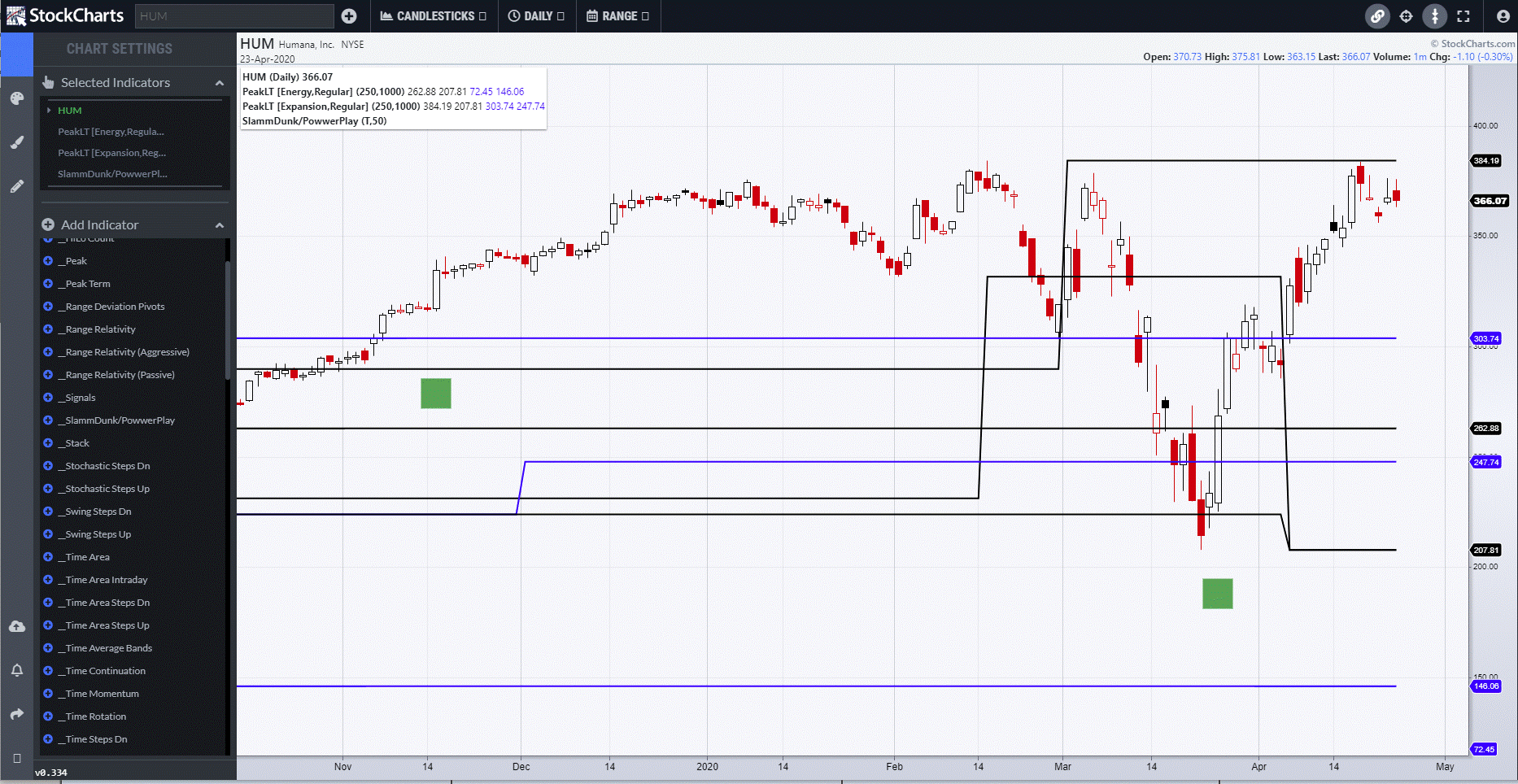
By their nature, sector ETFs smooth out exposure, and therefore Powwerplay or Slammdunk signals are even rarer than on individual stocks. The chart below is of Homebuilders (XHB) and shows a Slammdunk that broke monthly support as the recent bear trend began, followed then by a Powwerplay as the trend exhausted itself.
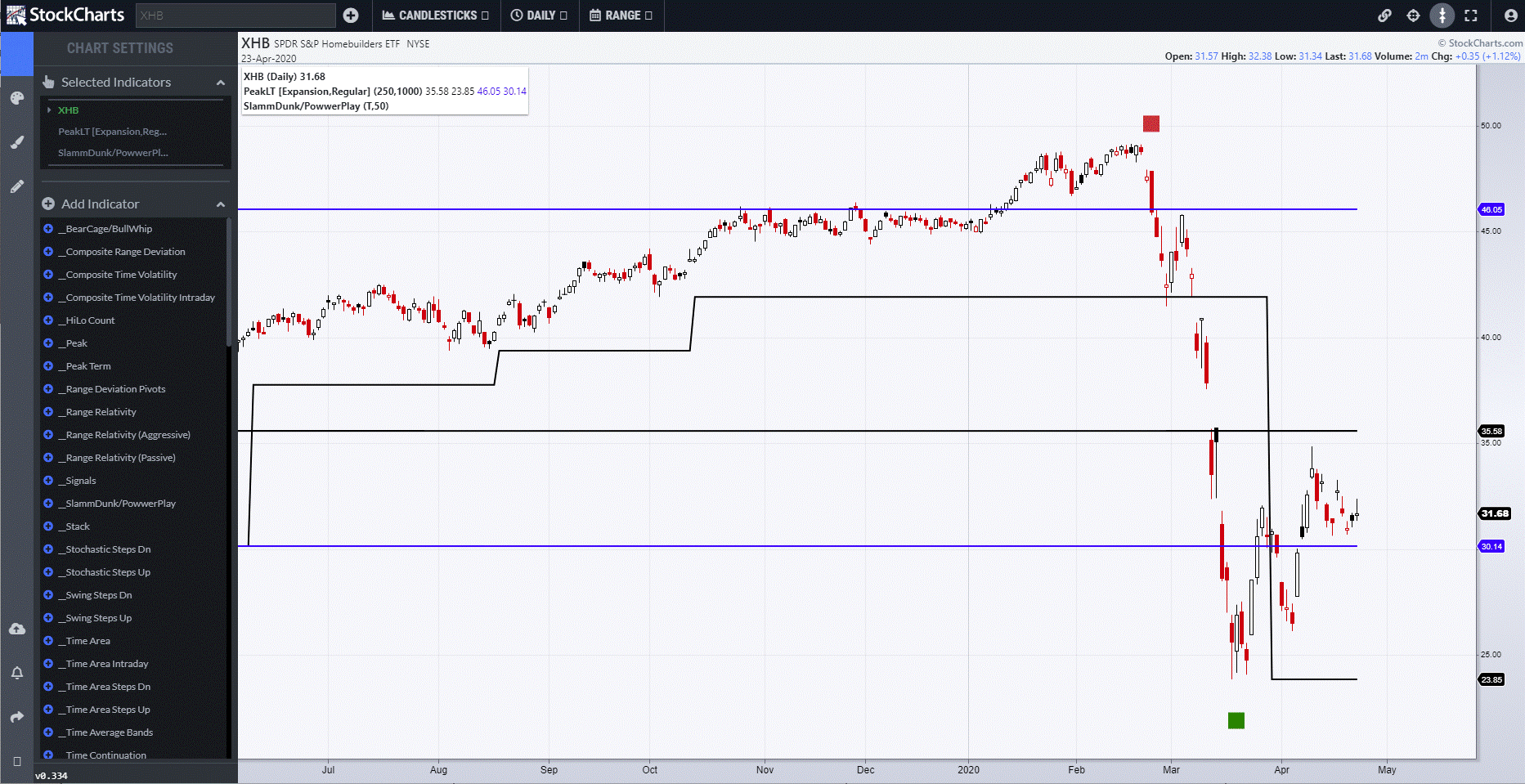
The studies have uses on all asset classes and instruments, the next example being Bitcoin ($BTCUSD). The first Powwerplay came directly from the strong weekly-based support zone. It took some time to develop, but had space to rally, which it eventually did, reaching its upside target in the middle of February. The subsequent collapse saw exhaustion identified by a Powwerplay at the lows, although this was not at a support point.
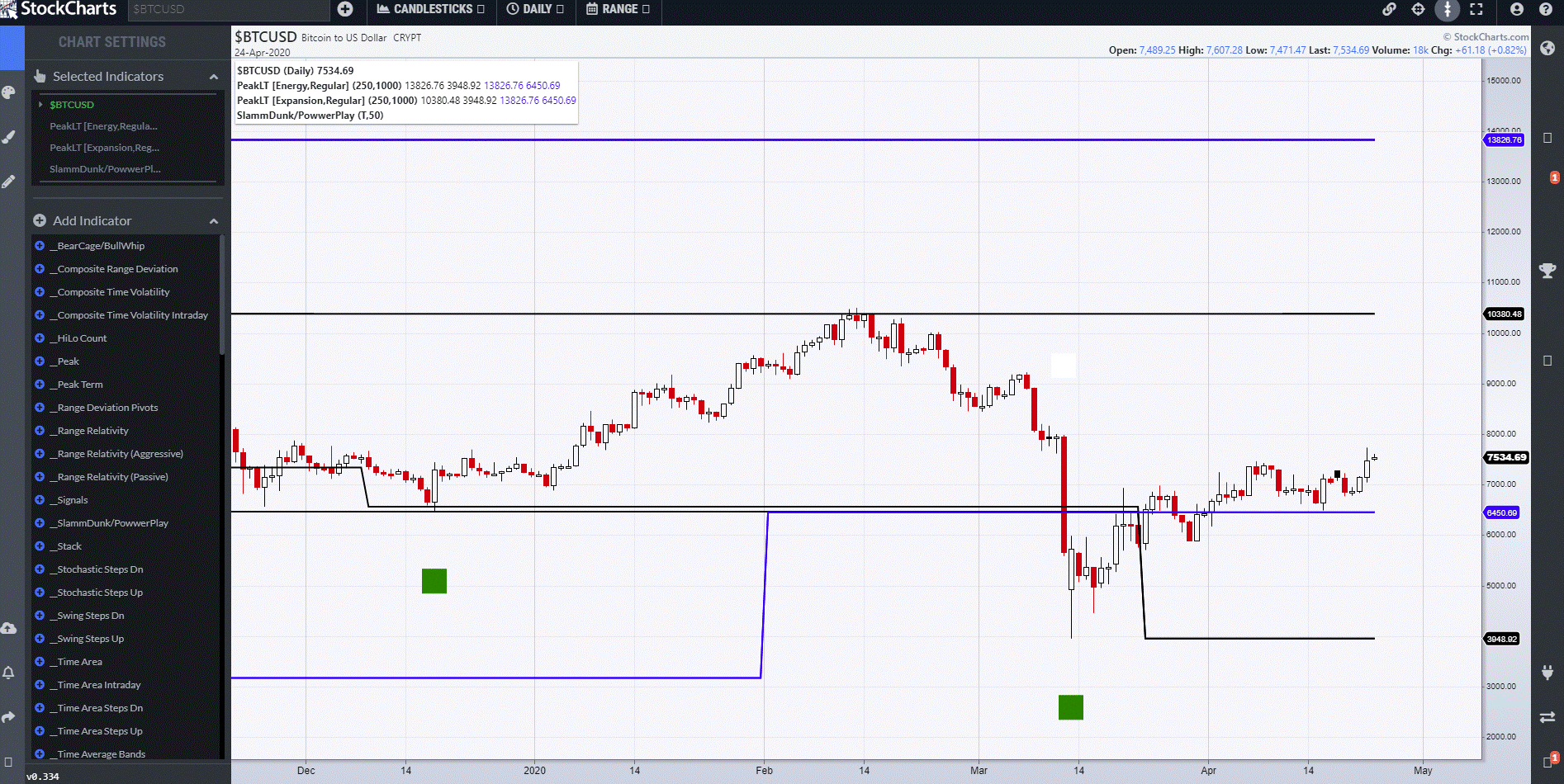
Whilst Slammdunk signals are typically used as exits to long stock positions, they can also be used to instigate short positions. Whilst it's important to remember the hidden finance costs associated with shorting by borrowing stock, in large-caps there is a healthy and liquid option market. The chart shows Boeing (BA), whose woes are well-known. There are two Slammdunk signals. The first was moving into support, so it was necessary to see if price could break that final level on a closing basis, which it did two days later. Subsequent to that, there was a highly unusual acceleration signal as price went into freefall, before reaching its final downside target and monthly-based Peak support and forming a significant low.
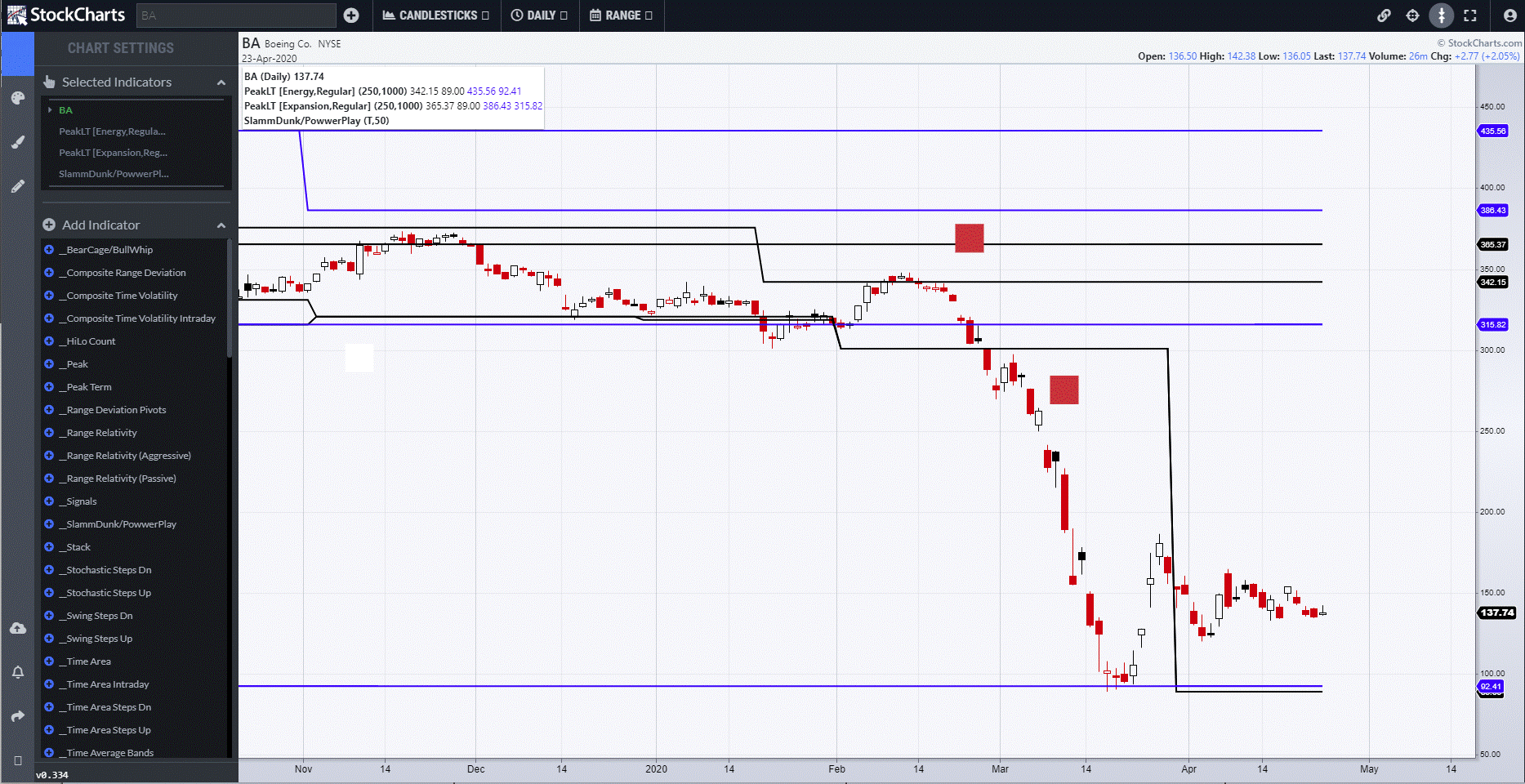
This leads us into the next derivative of the Range Deviation Pivots. Identified as Range Relativity, they analyze the relationships between multiple timeframe limits of range from the weekly up to the quarterly in order to identify not only extremes, but the connection between Time and Price and its ability to signal a reversal of trend on a daily chart. Boeing shows a Green Triangle at that final support that led to a swift and violent counter-trend move. This is a common trait of a Range Relativity signal, and we will be analyzing its properties in depth next week.
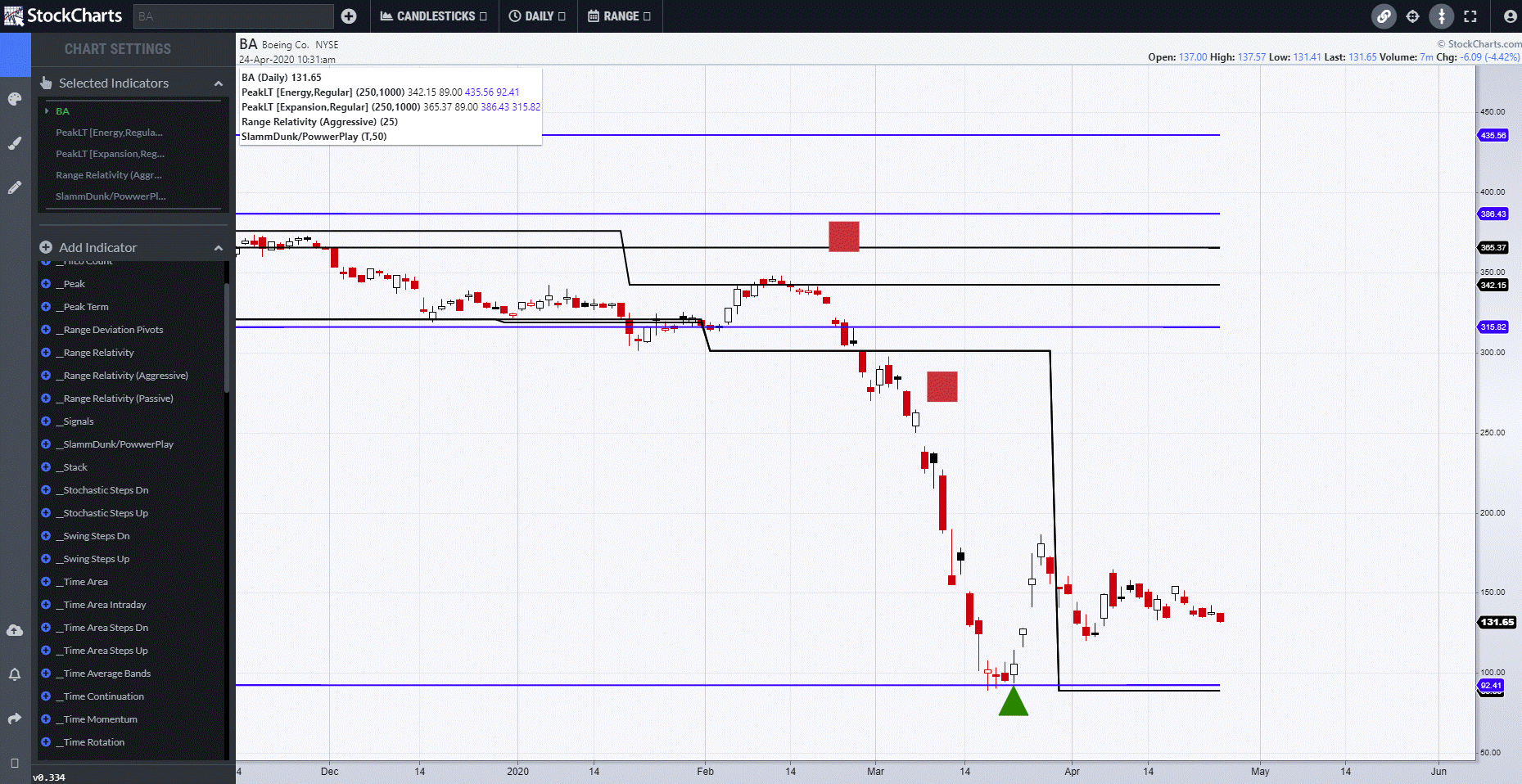
I can be contacted at shaun.downey@aol.com to answer any questions.
Shaun Downey
